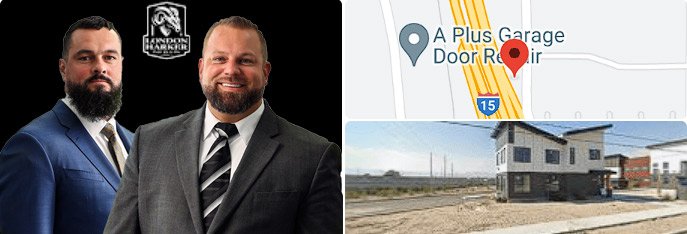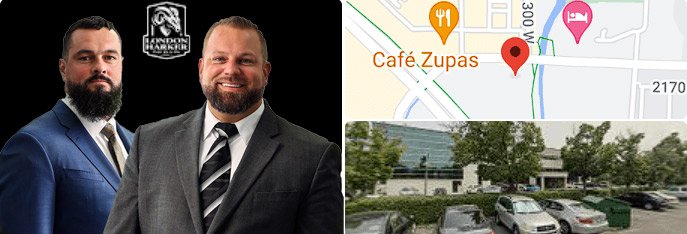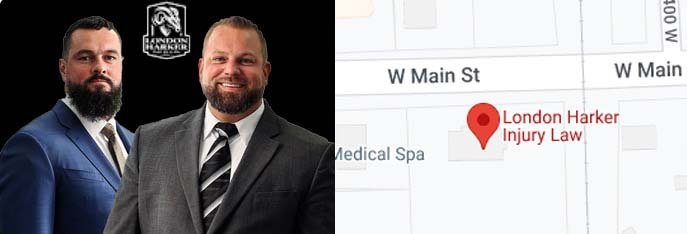Posted on Thursday, October 2nd, 2025 at 11:31 am
Why Timing Is Everything for Your Utah Car Accident Claim
If you’ve been injured in a car accident in Utah, your immediate focus is likely on healing, medical bills, and getting your car repaired. But there’s another factor that can make or break your case: time. Utah law sets strict deadlines—called the statute of limitations (SOL)—for filing a lawsuit. Miss those deadlines and a court can bar your claim, even if liability is clear and your injuries are serious.
Understanding which deadline applies to your situation—and the exceptions that might extend it—is essential. Acting quickly not only protects your rights but also preserves the evidence you’ll need to build a strong claim.
The General Rule: Four Years for Personal Injury in Utah
For most car accident injury cases in Utah, you have four years from the date of the crash to file a lawsuit. This is set out in Utah Code § 78B-2-307. The rule covers common motor-vehicle injuries such as:
- Whiplash, herniated discs, and other spine injuries
- Concussions and traumatic brain injuries (TBI)
- Fractures and orthopedic injuries
- Soft-tissue and internal injuries
Filing after the SOL expires almost always leads to dismissal—no matter how strong your evidence may be. To keep your case viable, start investigating and documenting early. For medical guidance on why speed matters, see Why Prompt Medical Treatment Matters After a Car Accident in Utah.
Other Deadlines You Need to Know
Different claim types tied to the same crash can have different timing rules. Here are the key Utah deadlines for motor-vehicle claims:
| Type of Claim | Deadline (from Accident/Death) | Legal Source |
|---|---|---|
| Personal Injury / Bodily Injury | 4 years | Utah Code § 78B-2-307 |
| Property Damage (Vehicle/Personal Property) | 4 years | Utah Code § 78B-2-307 |
| Wrongful Death | 2 years | Utah Code § 78B-2-304 |
| Claims Involving Government Entities (notice of claim) | 1 year to file notice | Utah Code § 63G-7-402 |
Editor’s note: If you’ve seen references to a 3-year deadline, that typically concerns real property (e.g., land) and not vehicle/personal property. For motor-vehicle property damage, Utah applies the 4-year period in § 78B-2-307.
Key Exceptions That Can Extend or Pause the Deadline
Utah recognizes limited situations where the SOL can be “tolled” (paused) or effectively extended. Common examples include:
- Minors (under 18): If a child is injured, the period typically doesn’t start until age 18, giving most minors until their 22nd birthday to file.
- Mental Incapacity: If a victim is incapacitated (e.g., coma, severe cognitive impairment), the SOL may pause until capacity returns.
- Delayed Discovery Rule: Some injuries aren’t obvious right away. If an injury is diagnosed later (e.g., a herniated disc months after the crash), the four-year clock may begin when the injury is discovered or reasonably should have been discovered.
- Fraud or Concealment: If key facts are concealed, courts may extend deadlines in limited circumstances.
These doctrines are fact-specific. Don’t assume they apply—ask a lawyer early.
Utah’s Comparative Negligence Rule (and Why Timing Still Matters)
Utah follows a modified comparative negligence system under Utah Code § 78B-5-818. You can recover damages as long as you’re less than 50% at fault. Your compensation is reduced by your percentage of fault.
Delay helps insurers shift more blame your way. Filing early preserves evidence and witnesses, making it harder for an insurer to inflate your fault share. For guidance on timing and strategy, see When to Hire a Lawyer After a Utah Crash.
Insurance Claim Deadlines in Utah
Separate from lawsuit deadlines, insurers face administrative timing rules. Under Utah’s insurance regulations (see Utah Office of Administrative Rules, e.g., R590-190):
- Insurers must respond to communications promptly (generally within about two weeks).
- Once they have the necessary documentation, they must approve or deny claims within about 30 days.
Utah is also a no-fault state for basic benefits, meaning you typically start with your own PIP coverage. For an overview of how that works and when you can step outside no-fault to sue an at-fault driver, see How Utah’s No-Fault Insurance Works After a Car Accident.
Why Waiting Is Risky—Even with Four Years
On paper, four years sounds like forever. In practice, waiting undermines your claim:
- Evidence disappears: Skid marks fade, vehicles get repaired or scrapped, CCTV footage is overwritten, and electronic data (EDR/“black box”) may be lost.
- Witness memory fades: Eyewitnesses become harder to find and less confident over time.
- Causation gets murkier: Gaps in treatment or delays in diagnosis invite attacks that your injuries came from something else.
- Insurers gain leverage: The longer the delay, the easier it is for adjusters to devalue or deny.
For practical communication tips that prevent avoidable damage to your claim, read What Not to Say to Insurance After a Utah Car Crash.
What to Do Right Now
- Get medical care immediately and follow through with treatment. Early records tie your injuries to the crash.
- Notify your insurer and open a PIP claim; keep copies of everything you send and receive.
- Preserve evidence: Photos, vehicle data, repair estimates, police reports, and contact info for witnesses.
- Consult a Utah car accident attorney early to preserve your rights, manage insurer contact, and file before deadlines.
Frequently Asked Questions About Utah Car Accident Lawsuit Deadlines
How long do I have to file a car accident lawsuit in Utah?
In most cases, you have four years from the accident to file a personal injury or property damage lawsuit under Utah Code § 78B-2-307. For wrongful death, it’s two years. If a government entity is involved, you must file a formal notice of claim within one year under Utah Code § 63G-7-402.
What happens if I miss the statute of limitations deadline?
The court can dismiss your case, and you may permanently lose the right to compensation—even if liability was clear. Don’t rely on exceptions; get advice and file on time.
Do government-related car accident claims have shorter deadlines?
Yes. You must serve a notice of claim within one year on the correct government entity. Missing that notice deadline may bar your claim entirely, so act fast.
What if I discover my injuries months after the crash?
Utah recognizes a limited discovery rule. In some cases, the four-year period can start when you discovered (or reasonably should have discovered) the injury. Because this is fact-dependent, talk to an attorney as soon as you’re diagnosed.
Should I wait to file until close to the deadline?
No. Delay hurts evidence, weakens witness testimony, and gives insurers leverage. Engaging counsel early helps preserve proof and value.
Conclusion: Don’t Let the Clock Run Out
Utah’s statute of limitations shapes every car accident case. Most injury and vehicle damage claims carry a four-year deadline; wrongful death has a two-year limit; and government-related claims require a one-year notice of claim. The sooner you act, the stronger your case will be—legally and evidentially.
If you’ve been injured in a Utah car accident, talk with an experienced personal injury lawyer now to protect your rights, preserve evidence, and ensure your claim is filed on time.
Related Reading on London Harker
- How Utah’s No-Fault Insurance Works After a Car Accident
- When to Hire a Lawyer After a Utah Crash
- Why Prompt Medical Treatment Matters After a Car Accident in Utah
- What Not to Say to Insurance After a Utah Car Crash



